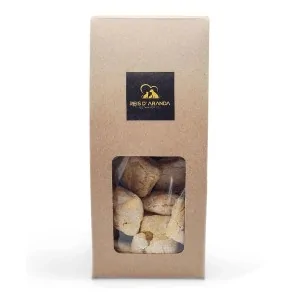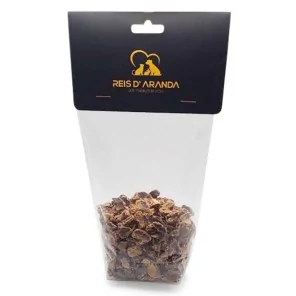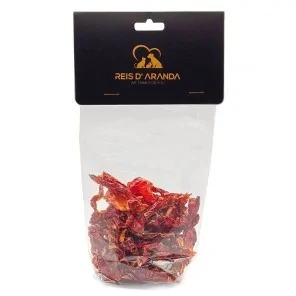Its name says it all: the Vienna blue rabbit comes from Austria. Not only is it beautiful with its shiny blue-grey...
WHAT SHOULD MY RAT EAT?
INTRODUCTION
Although it may seem a relatively simple subject (because "rats eat everything, don't they?") it is much more complex and, if we want our rat to live as long as possible, we must try to provide it with a careful diet adapted to its species and lifestyle.
The rat is an omnivorous animal and is also an "opportunist", which means that it will eat whatever it finds in its path, without being fussy about anything, and that it can eat both vegetable and animal products. Wild rats have a very different diet depending on where they live, for example, a rat living in a rural environment will base its diet on grain, vegetables, eggs or insects, they will even eat carrion (remains of dead animals) without distinguishing whether it is one of their own species (cannibalism) or another kind of animal or they will enter farms and, if they can, they will kill and take (or eat there and then) the litters of a few days old of other species such as rabbits or guinea pigs.
FEEDING WILD AND DOMESTIC RATS
City rats, on the other hand, see humans as a great source of food, which sharpens their already high intelligence, as they will squeeze through any gap to get into pantries, kitchens or storerooms through sewers or holes in walls or doors, and can enter through really narrow spaces. But, although this is something that we find "unpleasant" (not only for hygiene reasons but also for health reasons), it is not an animal that should be eradicated from cities, as they fulfil a function in the subsoil, and that is to clean the sewers or streets of all the remains that we leave behind, otherwise it is likely that the pipes would become clogged more easily. One of the reasons why "street" rats live for such a short period of time (approximately 6 months) is due, among other factors, to the food they eat, which does not nourish them correctly or causes great wear and tear on their bodies, as it is not the correct one. This type of rat is focused on survival, but this is not the case with "pet" or "fancy" rats, our duty is to provide them with the correct nutrition to help them "live".
Although the "wild" and "fancy" rats are the same species, the needs of both types of animal are very different; it is quite difficult for a "fancy" rat to find itself in the position of having to search through large piles of rubbish, or to sneak into a pen to steal eggs or hunt for young. If one day we make them "sin" (leftover pizza, dog food...) and eat something inappropriate, nothing will happen, just as we can spend one or two days eating junk food, but doing so constantly shortens the life of any living being, whatever its species, and will always be adapted to the age and circumstances of the rat (babies, pregnant females, the elderly...).
In the case of rats, this shortening of life span can be up to a year and a half, no matter how well cared for their genetic line or how "long-lived" their ancestors are.
One of the problems we can find in the mixtures we can find on the market is that the rat can choose what it wants and does not want to eat, which can lead to a nutritional imbalance and we have to watch, on a daily basis, that it eats everything. On the other hand, we have an even more important problem, and that is that many animal feed manufacturers sell this type of feed for various types of animals: rats, mice, rabbits, guinea pigs... And this is a big mistake. One option is to make our own mixture, but this is a big commitment for which we have to look very carefully at the ingredients and needs of our rat, if its food is not varied or does not contain any of the properties it requires, it can end up with major nutritional deficiencies (anaemia, obesity, rickets.).
Apart from the food we give them every day, it is essential that we offer them (also every day) fresh fruit or vegetables (we will see which ones a little further on) and, two or three times a week, a source of animal protein in raw form and always fresh (never give them expired or rotten food!), for example eggs, fish or meat.
No matter what ideology you have about your diet or lifestyle, rats (just like dogs, cats or ferrets) need an animal source in their diet for it to be correct. You can NOT force them to have a diet based exclusively on cereals or vegetables, if this is your intention, get a herbivorous animal, such as a rabbit or guinea pig.
Regarding the quantities that our rats can eat this is something that we have to control in a serious way, there are some rats that can be allowed to have a full trough and we don't have to worry about this as they manage their own food and, unlike others, they do not have that feeling of "gluttony" that can cause significant obesity in rats; in the same way that we have to watch out that they do not make "food reserves" all over the cage. What do we mean by "food reserves"? Some rats have a tendency to hide food (either in the same place all the time or in different areas of their habitat) so that they can eat it later. This is normal behaviour for them, but it is also very unhealthy, as the food (when it is not eaten, it will rot quickly, fungus, bacteria...).
In short, it will be a source of infection for both our rats and ourselves, so we must check every day that they do not do these things. Unlike other behaviours that are "trainable" (such as doing their needs in a corner) it will be practically impossible to cut this kind of things, it is something natural and spontaneous in them, so we must be respectful with our rats and adapt our routine to include checking this kind of "stores".
Regarding "commercial" treats, rats do not usually give them more attention than they give to feed; some breeders recommend, in this sense, to buy the "drop" (image below right), they can be offered both dog/cat (containing a source of animal origin) as well as those intended for rodents.
Another great treat on the market is calcium stones, which are important for filing the teeth of our rats (although they are not suitable for rabbits or guinea pigs).
Another very beneficial treat for incisor wear and very suitable for our rats are "cuttlefish bones", which are mainly marketed for birds.
With regard to "human treats" (fruit, vegetables, cheese, meat, biscuits, pizza (without sauce) etc), we must be very careful with the amount we give them, as this should not exceed the size of a pin ball, on the other hand it is better to offer it to them when they are out of the cage, come to us, do something we like (like using the sandbox or learning a trick), not only will it be more satisfying for the rat, but it will also be a great way of encouraging them to trust us and learn lots of things.
We must be very careful with sugars and fats to avoid obesity and the diseases they cause, so always opt for healthy treats.
SUITABLE FOODS
-Chard
-Apricot
-Cooked artichoke
-Rice
-Courgette
-Cherry
-Mushrooms
-Dandelion greens
-Pumpkin
-Coconut
-Eldivia
-Endive
-Asparagus
-Spinach
-Peas (cooked)
-Strawberries
-Pear
-Pepper
-Banana
-Pineapple
-Watermelon
-Arugula
-Tomato
-Wheat
-Grape
-Carrot
-Cauliflower
-Chickpeas
-Dates
-Egg
Muesli (without fruit/sugar)
-Nuts
-Chicory
Avocado (ripe without skin) -Blueberries
-Blueberries
Garlic (very, very small amount)
-Celeriac (ripe without skin)
-Celery
-Carob
-Hazelnuts
-Boiled potato
-Broccoli (very little)
-Goji berries
-Peanuts
-Grilled or cooked meat
-Chestnuts
-Custard apple
-Cilantro
-Green beans
-Apple
-Peach
-Melon
-Nectarine
-Papaya
-Pasta
-Cucumber
-Insects (few)
-Ham and ham
-Lettuce
-Lentils
-Corn
-Homemade bread
-Boiled purple/white potato.
-Beetroot
-Pine nuts
-Pumpkin seeds
-Sunflower seeds
-Puerro (white part and very little quantity)
-Salted cheese.
-Unsalted cheese
-Natural yoghurt (without sugar)
-Sultanas
-Alder
Sweet almond (unsalted/sugar-free) -Oats
-Oats
Aubergine (cooked and in very small quantities)
-Aggplant (cooked and in very small quantities)
-Lamb's lettuce
-Barley
-Couscous
-Spelt
Raspberries (very small quantity)
Sugar-free biscuits
-Worms (very few)
-Khaki
-Dog or ferret tins (very little)
-Flax
-Litchi
-Cashew nuts
-Cooked quince
-Millet
-Blackberries (small quantity)
-Olives (unsalted)
-Oregano (small quantity)
-White nettle (cooked)
-Hard bread
-Baby papilla (without sugar or onion)
-Papaya
-Pavia
-Pepino
Raw/cooked fish (without sauce or spices)
-Pistachios
-Quinoa
Oak (only to gnaw on, not to eat)
-Tomato (a little)
-Thyme (a little)
-Clover flower
-Willow wood
-Carrot
FORBIDDEN FOODS
-Raw artichoke
-Lupine (a legume)
-Alcohol
-Dried beans
-Sugar
-Raw potato
-Cabbage
-Spices
-Serrano ham
-Kiwi fruit (in cores)
-Lemon (in males)
-Red cabbage
-Tangerine (in males)
-Mango (in cores)
-Cooked seafood
-Green banana
-Black pepper
-Licorice
-Fruit seeds
-Soybeans
-Cannabis
-Raw purple potato
-Birch
-Poplar
-Bitter almonds
-Poppies
-Peas
-Carbonated beverages
-Acorns
-Laurel
-Paracetamol
-Grapefruit (in males)
-Cocoa
-Coffee
-Caffeine
-Caqui
-Onion
-Chives
-Pomegranate
-Ragwort
-Fig
-Ginger
-Milk
-Orange (male)
-Parsley
-Grapefruit
-Salt
-Nutmeg
-Commercial bread
-Horseradish
-Tobacco
-Tea
-Tea
-Candy
-Alfalfa
-Fat
-Cat's foot
-Raw or dried beans
-Beech
-Ivy
-Pine
-Rhicinus
-Rhubarb
-Red lettuce
-Black rabbit
-Tofu
VOMITING IN RATS AND D-LIMONENE
Rats physically cannot vomit, so ingestion of any of these things, no matter how small the amount, can be fatal to them. Some of the effects they produce in the body are not seen immediately, but take several hours to show their effects, and by then it is quite likely that nothing can be done for the rat.
For example, a compound found in citrus fruits (both external and internal) called "D-Limonene" is incompatible with the hormones of male rats and has a lethal effect on them. Some products such as commercial feed or anti-parasitic products may also contain it in their composition, so it is important to check what we give our rats before giving them anything.
Neither can we give them "pasty" type food if it is not diluted beforehand, as this could cause asphyxia.
HOW TO CHOOSE A GOOD FEED?
The first thing to bear in mind is that, in the composition of the feed, the first ingredient will be the most abundant of all, and the percentage of each ingredient must also be stated in detail. It is not enough to put "cereals X%" or "oats X%", "flax X%"... Nor is it advisable to buy one that says "fruit" in general (without specifying), because of the "D-Limonene" which is deadly for males. When it is not specified, they are usually leftovers of these foods that, perhaps, do not provide everything they have to provide in a balanced nutrition. A great option is the natural feed for rats from Reis d'Aranda.
A feed high in proteins and lipids (fats) is excellent for babies, infants, convalescent rats (recovering from a medical process)... But it is not good for adults, as an excess of proteins can lead to kidney failure and an excess of fats can lead to obesity.
Leave a comment
Log in to post comments
















